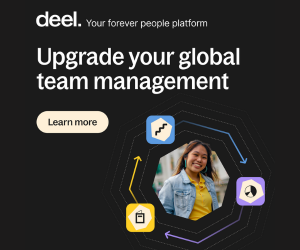- Research shows that a healthy, future-ready culture makes organizations five times more likely to outperform in revenue growth, profitability, and market share.
- Future-ready cultures are built on three principles: a focus on employee development, a clear mission-driven purpose, and a readiness for change.
- Organizations must balance innovation with established procedures to encourage collaboration and flexibility.
I recently had the distinct pleasure of interviewing Kevin Oakes, CEO of i4cp (Institute for Corporate Productivity), a leading HR research firm.
Our conversation, focused on their latest research, revealed a startling truth: a robust, future-ready culture can boost an organization’s performance by a staggering five times.
This isn’t mere conjecture; it’s a data-backed assertion derived from decades of rigorous research at i4cp, an organization with roots extending back to its days as the Human Resource Institute.
Their research consistently connects HR practices to tangible business outcomes like revenue growth, market share, and profitability. i4cp doesn’t just identify best practices; they pinpoint “next practices” — those with a strong correlation to business impact yet to be widely adopted.
Cultivating the right culture is not just a “nice-to-have,” but a critical driver of exponential business growth.
Decoding the Blueprint for a Future-Ready Culture
Oakes shared insights from a pivotal study on culture change, involving over 7,000 participants. The study uncovered a sobering reality: most culture change initiatives fail.
However, by meticulously examining the successes, i4cp identified a blueprint for creating a healthier, more agile culture. This research culminated in a book, “Culture Renovation®,” outlining 18 actionable steps for building an “unshakable organization.”
Building upon this foundation, i4cp’s latest research delves into the creation of agile, future-ready cultures — a critical capability in today’s unpredictable business sector. As Oakes aptly put it, the goal is to cultivate a culture that not only accepts change but embraces it as an opportunity.
The benefits of a healthy, future-ready culture are not merely qualitative. They are quantifiable and profound.
Oakes revealed that companies with such cultures are five times more likely to be high-performing organizations, demonstrating superior revenue growth, profitability, and market share.
This isn’t a vague correlation; it’s a direct link between cultural health and financial success. Further, these organizations experience five times greater employee productivity, double the diversity, four times higher engagement and well-being, and significantly improved innovation.
Critically, they are five times more likely to retain and attract top talent — an essential advantage in today’s competitive talent market. These statistics, derived from i4cp’s extensive research, paint a compelling picture of the return on investment in a healthy culture.
The Three Pillars of a Future-Ready Culture
Oakes identified three core principles underpinning future-ready cultures. The first is a laser focus on employees, prioritizing their growth and career opportunities.
These organizations measure people leaders not just on business outcomes, but also on their ability to develop their teams. This creates a culture where employee development is not an afterthought, but a core performance metric.
As Oakes explained, neglecting employee outcomes can severely damage the overall culture. This employee focus is inextricably linked to creating a learning-centered culture, one where knowledge sharing is actively encouraged.
As Satya Nadella of Microsoft famously stated, it’s about cultivating a “learn-it-all” culture, not a “know-it-all” one.
The second principle is being mission-driven. This means having crystal-clear purpose and mission, with leaders embodying the organization’s values. This alignment between words and actions builds trust and strengthens the cultural fabric.
The third principle, and perhaps the most important, is being change-ready. This involves cultivating a fluid mindset and supporting collaboration across the workforce, enabling the organization to embrace change as an opportunity.
Balancing Exploration and Exploitation in a Changing World
Oakes also addressed the balance between “exploitation” (leveraging existing strengths and standard operating procedures) and “exploration” (adapting to new realities). While SOPs offer efficiency, they can hinder agility. The key, he emphasized, is balance.
Change-averse cultures exhibit distinct symptoms: excessive hierarchy, adherence to rigid rules, and a “that’s the way we’ve always done it” mentality. These cultures often reward rule-following over innovation, stifling growth and adaptability.
Conversely, change-ready cultures prioritize people, innovation, and execution.
They avoid the “me versus we” mentality often found in toxic cultures with excessive individual incentives. They also steer clear of “content and complacent” cultures characterized by over-inclusivity and risk aversion, where decisions are often delayed by an excessive need for consensus.
As Oakes noted, these cultures often lack psychological safety, leading to “meetings after the meeting” where true opinions are finally voiced.
Decision-Making and Culture
Our conversation also touched on the challenges of decision-making. As organizations grow, decision-making authority must be pushed down to maintain agility. This requires trust in employees and a willingness to view mistakes as learning opportunities.
As Oakes suggested, celebrating these “learning opportunities” fosters a culture where people are not afraid to make decisions.
He also pointed out the value of tools like RACI charts (Responsible, Accountable, Consulted, Informed) to clarify decision-making roles and responsibilities. This is particularly important for organizations experiencing rapid growth, where existing decision-making processes may not be keeping pace.
Oakes concluded with a powerful message: if organizations truly want to improve productivity, collaboration, and innovation, they must prioritize culture.
A healthy culture has a far greater impact on these key drivers — and ultimately on the bottom line — than where employees physically work. He urged senior leaders to recognize the direct link between a thriving culture and organizational performance.
Building trust in employees and empowering them to make decisions about their work environment is a fundamental element of creating this positive culture. As our conversation made clear, investing in culture is not just a feel-good initiative; it’s a strategic imperative for achieving exceptional business results.


 Dr. Gleb Tsipursky – The Office Whisperer
Dr. Gleb Tsipursky – The Office Whisperer Nirit Cohen – WorkFutures
Nirit Cohen – WorkFutures Angela Howard – Culture Expert
Angela Howard – Culture Expert Drew Jones – Design & Innovation
Drew Jones – Design & Innovation Jonathan Price – CRE & Flex Expert
Jonathan Price – CRE & Flex Expert














